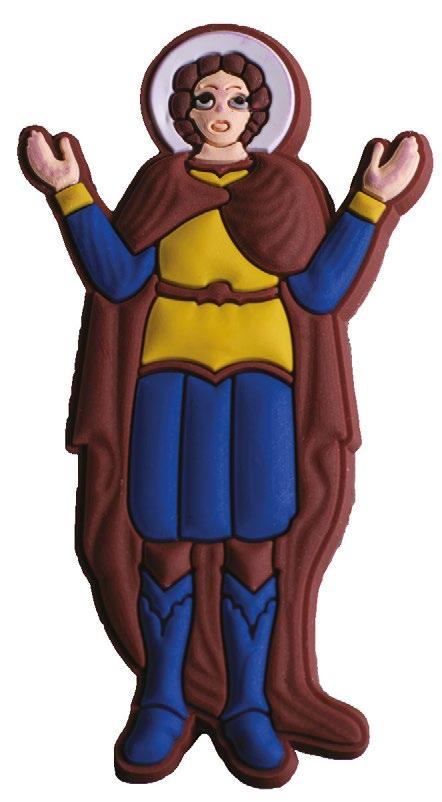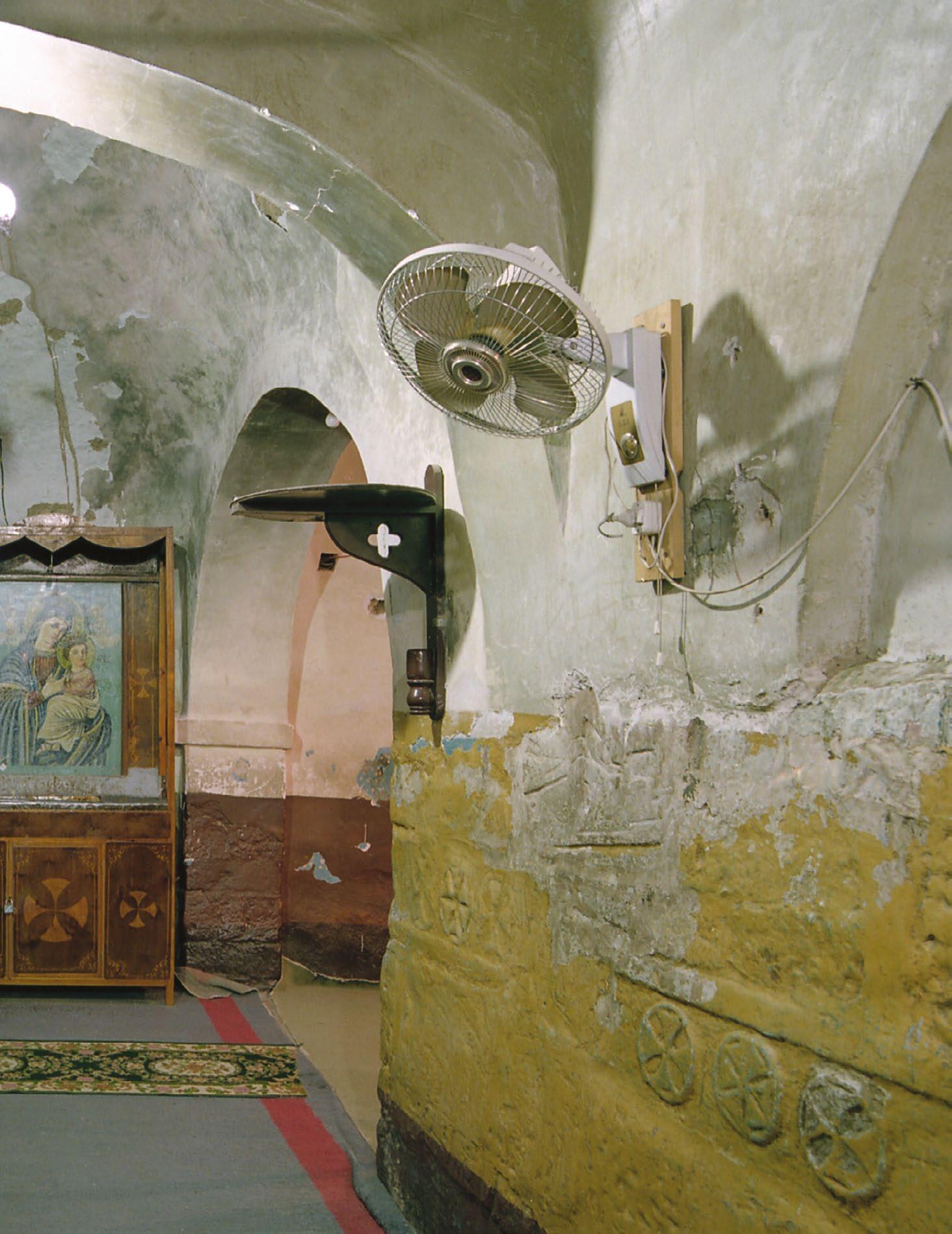
AN ODE TO THE FANTASTIC; TO THE PEOPLE OF EGYPT. DEDICATED TO THE FLAMBOYANT GLORIES AND REMINDERS OF OUR EVERYDAY MIRACLES; MADE BY THEM FOR THEM AND FOR US TO TRULY BELIEVE WHAT WE BELIEVE. WHETHER BADGES OF HONOUR, SYMBOLS OF PRIDE OR GENTLE TOKENS OF FAITH; HUMAN OR HEAVENLY, WHEREVER THEY ARE FROM, TO WHOMEVER AND WHEREVER THEY BELONG.
In a world focused on material things, some objects go beyond their physical form and become symbols of deeper meaning. Worn by time and steeped in prayer, they bridge the earthly and the divine, making faith something you can grasp — like handlebars on a long and gruelling journey.
This is particularly evident with religious souvenirs from the Egyptian Coptic Church, which to an outsider might seem like an eclectic mix of kitsch and devotion, but for a Copt, these items are cherished symbols of faith.
Flipping through the pages, you’ll find a faux fur-trimmed pillow with the Virgin Mary, a Rubik’s cube blending pixelated saints and Jesus — each twist turning faith and pop culture into a metaphysical puzzle — and a snow globe with an angelic scene from scripture aswirl in glitter. At first glance, these pieces may seem like ordinary, mass-produced trinkets made of plastic or other synthetic materials. Yet they evoke a spiritual connection, each object boldly reflecting a culture that blends the sacred with the whimsical, daring anyone to question where devotion ends and eccentricity begins.
This is no ordinary book. It captures the profound connection between Coptic believers and the traditions that have sustained them for generations. And these are not just objects; they stand as emblems of survival, reminders of the struggles that shaped the Coptic community, and as tributes to the saints who preserved their faith.
The word “Copt,” as old as the people it names, comes from the Greek Agyptos, derived from Hikaptah — an ancient name for Memphis and Egypt’s first capital. Today, “Coptic” refers to Egyptian Christians and the final stage of the ancient Egyptian script. For centuries, the Coptic people have preserved their language and identity through the simple act of memorization.
Preservation, therefore, is not just a practice but a sacred tradition within the church, reflecting the Copts’ commitment to safeguarding their heritage. This dedication is evident in their use of sacramentals, blessed objects that embody spiritual significance.
This deep connection to history can be traced back to AD 49, when St. Mark founded the first Christian church in Africa after Jesus’ Ascension. As one of the Gospel authors, St. Mark played a key role in early Christianity, and his work in Alexandria laid the foundation for the faith across Africa. His martyrdom in AD 68 at the hands of the Romans marked the beginning of a religion born in hiding but destined to thrive.
Building on this tradition, Egypt’s Copts later established Christianity’s first monastery, following a path pioneered by St. Anthony the Great. This tradition allowed the Coptic Church not only to survive but to grow in isolation.
Though many places of worship were destroyed over the centuries, their memory endured. The Holy Gospel and Coptic liturgical practices were preserved
through oral tradition, a sacred process initiated by Jesus that safeguarded the faith through centuries of hardship. The saints who endured these trials are seen as martyrs, their stories immortalized in Coptic memorabilia. The depth of Coptic spirituality finds one of its clearest expressions here.
One Good Friday, a Coptic priest asked his congregation to reflect on the shape of the cross. After a moment of reflection, he pointed out its distinctive features — deliberate plainness and purposeful geometry, designed to echo nature. This, he explained, signified a shift away from Christ’s suffering. The cross, then, carries a quiet message. As the priest told the worshippers, when seeking God, do not linger in pain longer than necessary. Resurrection is always near.
This spirit of quiet strength is embodied in the everyday objects catalogued in PLASTIC JESUS. Among them are a crucifix once affixed to the dashboard of a car that miraculously avoided an accident, and a rosary carried by an anxious medical student who passed his exams against all odds.
Passed around like mints, these objects grow more meaningful with time, their edges smoothed and colours gently faded from years of handling. Never discarded, they carry stories that defy logic, serving as symbols of faith’s persistence.
The unique charm of the pieces featured in PLASTIC JESUS lies in their
imperfect details. Their design, whether intentional or not, bypasses conventional standards of style and beauty, resulting in something both unique and universal.
Think of a child’s first attempt at drawing a family portrait — sometimes missing arms, feet, or a nose — yet perfect in its sincerity. Ultimately, it’s not about flawless execution but the deeper meaning behind it, reminding us that, like these objects, we carry meaning beyond our material form. In God’s eyes, despite our imperfections, we are loved just as we are.
ADAM MAKARY, CAIRO
SEPTEMBER 9TH 2024



















